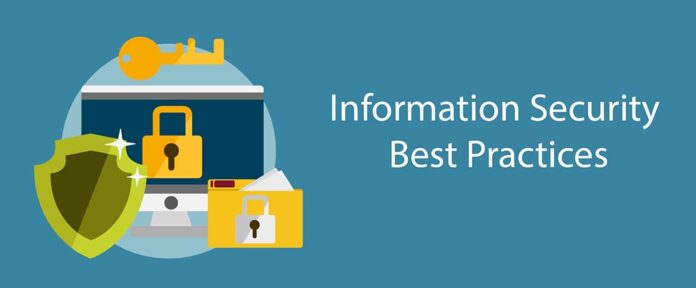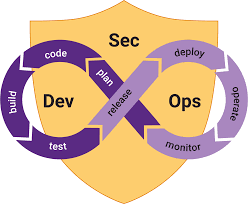Most demanding application security best practices will be discussed in this article. The industry of app development has experienced unprecedented growth since 2010. Applications have also become a part of our daily life due to the availability of millions of smartphone and online apps. Concurrently, the internet of things (IoT) has expanded, making it possible to automate manual processes.
These positive advances have, however, also brought about a number of unfavourable alterations, with security issues becoming more common. Even when they believe their application is secure enough, the majority of programmers and companies release vulnerable code into production.
There are additional apps and security problems.
One of the most frequent problems with application security is:
- Amateur programmers: Due to a lack of trained developers and the growing demand for applications, a large number of amateur programmers are currently producing mobile applications. Development teams frequently lack the expertise required to handle new security issues.
- Use of inefficient tools: Developers typically waste money purchasing testing tools. And many individuals believe that the development process will take longer as a result of these tools.
- Web application attack vector: Web applications are the main attack vector for data leaks. As a result, businesses ought to be aware of the risks associated with using APIs in their apps. API security breaches regularly affect companies who are unaware that these interfaces are present in their products.
- Absence of a DevSecOps strategy: The vast majority of businesses do not secure their software using best practises for application security. DevSecOps procedures, often known as the “shift-left” paradigm, are crucial for ensuring that any security-related issues are handled and resolved as soon as possible. However, they are commonly neglected by organisations.
- Open-source vulnerabilities: The prevalence of vulnerabilities in open-source software is one risk factor. In 96% of cases, applications used in the enterprise sector are believed to use open-source software and libraries.
By using the application security checklist provided below, you can decrease the likelihood of these errors happening and raise the degree of security for your applications.
The procedures for developing desktop, mobile, and web software are comparable, thus the same security best practises can be used for all three. In terms of application security best practises and online application security best practises, this is particularly true.
Top 15 Application Security Best Practices In 2022
Top 15 Application Security Best Practices are explained here.
1. Adopt a DevSecOps Approach
DevSecOps, often referred to as the shift-left strategy, seeks to identify security flaws early on in order to avoid security concerns from developing and to deal with them as soon as they do. DevSecOps enables development teams to discover security vulnerabilities along the whole software supply chain, from design to implementation. This is another security best practices. Also check Python development
2. Implement a Secure SDLC Management Process
The secure software development life cycle management technique defines the product life cycle from the standpoint of product security (SSDLC). This process guarantees that the following products:
- Developed and maintained by personnel who have undergone security training
- Built in a secure environment
- Safely delivered to clients
This is another security best practices. The phrase “SSDLC” refers to the entire process of developing a new product, from the concept stage through all development phases, up until the product is fully and securely introduced onto the market as a mature product and through the end of its life cycle.
3. Address open-source shortcomings
Open-source software might expose you to major vulnerabilities despite having many benefits, such as cost effectiveness. As a result, it is crucial to constantly check for vulnerabilities while using open-source software, regularly provide updates, and patch vulnerabilities as soon as they are found.
4. Automate Simple Security Tasks
It is practically hard to eliminate all of the vulnerabilities using a manual process. Automation is therefore crucial. All minor tasks should be automated to free up teams to focus on more challenging work.
5. Be Aware of your Own Assets
Visibility is the first step to learning about the security posture of your organisation since you cannot secure what you do not understand. You must be aware of the exact asset breakdown of your application and software production infrastructure. This is another security best practices.
6. Risk Assessment
Evaluate the dangers by putting yourself in the attacker’s shoes. Make certain that everything is taken care of:
- Create a list of every asset that needs to be protected.
- Recognize your threats and develop containment and isolation techniques for them.
- Be aware of the attack surfaces where your app is most exposed.
- Ensure that you have the necessary security protocols in place to identify and neutralise threats.
- Determine whether you need any additional or maybe alternative tools.
7. Security Training for Developer
Since your security team is also in charge of pushing code into production, it is essential that developers receive training from this group. Of course, the specific developer’s position and security needs should be taken into account while tailoring this instruction. Also check benefits of Ecommerce to business
8. Manage Containers Propertly
This is another security best practices. Make sure your container photographs are digitally signed as a first step (e.g., Docker Content Trust). Automated scans for open-source vulnerabilities must be done in order to safeguard the use of the container throughout the common integration pipeline.
9. Limit User Access to Data
Limiting access to your data even more is one of the best strategies to improve security:
- Determine who really requires access to each specific resource.
- Establish access rules.
- To keep access privileges current, remove active credentials once access to the data is no longer required.
10. Update and Patch Regularly
Installing updates & patches is one of the best ways to maintain the security of your software. Why attempt to resolve problems yourself when they have already been resolved? But it’s essential to plan ahead for each new upgrade because doing so calls for developing the appropriate architecture and avoiding issues with API compatibility when updating to new versions.
11. Ensure Access to Log Data
Having access to log data from your routine cloud operations is crucial for any crisis response plan. The gathering and analysis of such data in the days leading up to an event will have a direct impact on security, and it may also be crucial for later investigations. In the event of a security incident, you can find yourself defenceless without this knowledge. This is another security best practices. Also check CRO tools
12. Encrypt your Data
Web application security best practises require encryption of all data, including that which is at rest and in transit. Using an SSL with a valid certificate should be regarded as fundamental encryption, among other things. Passwords and other sensitive user data shouldn’t be stored in plain text since doing so invites man-in-the-middle (MITM) attacks. Use the strongest encryption methods you can.
13. Use Pentesting
This is another security best practices. The majority of security issues may be discovered by automated tests before they are made public, but there may still be gaps that have gone unnoticed. To lower this risk, it is beneficial to engage a knowledgeable pentester to examine the application. This kind of ethical hacker tries to access the programme in order to find flaws and possible attack vectors and defend the system from an actual attack. The pentester must be an independent expert from outside the project.
14. Ensure Accurate input Validation
All entering material must be accurate in terms of both semantics and syntax. Verifying the length of the data is important; it should have the necessary number of digits and characters, be the appropriate size and length, etc. Whitelisting is recommended, although it is not always practical to employ this certification method.
15. Aim for Permanent fixes
Various vulnerabilities, including buffer overflow, cross-site scripting (XSS), and SQL injection, occasionally occur, as is evident when browsing the CVE listings. Determining the root cause as soon as a vulnerability arises, rather than patching it partially, is the key to permanently eradicating it. This is another security best practices.
Conclusion
Although there are many different thoughts and viewpoints among security experts regarding the best practises for application security, most would agree that any application security assessment checklist should contain the following five crucial items.
Being better secured than the competition and doing everything in your power to minimise application weaknesses will always make you a more difficult target to hack.
Application Security FAQ
What is application security?
Finding and addressing vulnerabilities at the application level is the process of application security. The application is subsequently subjected to hardening techniques designed to enhance its overall security posture.
What equipment is recommended for evaluating application security?
No testing method or instrument can totally eradicate security threats. Instead, teams must employ a range of strategies, including tools for software composition analysis (SCA) testing, interactive application security testing (IAST), dynamic application security testing (DAST), and static application security testing (SAST).
What main methods are employed for testing an application’s security?
One of the multiple common methods for identifying flaws in the source code of your product is by using static application security testing (SAST) tools. In contrast to SAST tools, dynamic application security testing (DAST) tools actively try to exploit vulnerabilities in order to find them while your application is operating.




